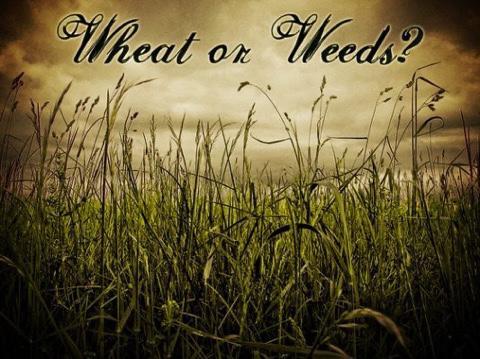Now we have to shape what some have started calling; The Church at Home. Although I keep asking myself; What do those who do not have a home do? For this reason, at the same time, I am declaring today in our Holyrood Church a Lenten day of prayer, fasting and reading the Bible in the Time of the Coronavirus.
Our decisions matter

Good morning, happy Tuesday, and many blessings.
The Gospel today (Matthew 13:36-43) presents Jesus’ explanation, at the petition of the disciples, of the parable of the wheat grain and the darnel. Some experts think that this explanation, which Jesus gives to His disciples, is not Jesus’ but the community’s. This is possible and probable, because a parable, by its nature, requires the involvement and the participation of people in the discovery of its significance. Just as the plant is already contained within the seed, in the same way, certainly, the explanation of the community is in the parable.
Once again, Jesus uses the image of the field to explain both the presence of good and evil in the world and to illustrate how those forces will manifest at the end of time. And it is precisely this objective that Jesus wanted and wants to attain with the parable. The meaning which we are discovering today in the parable which Jesus told two thousand years ago was already enclosed, or contained, in the story that Jesus told, just as the flower is already contained in its seed.
Why this parable? Faced with the self-sufficiency of religious groups that can be considered in direct line with God, Jesus invites his disciples to be vigilant and prepared, because at the end of time it will be the supreme judge who will make the separation between the true and false citizens of the kingdom . In any case, this parable is a good advice to be patient because of the coexistence of the tares with the wheat, taken these terms in the sense of bad and good, coexistence of faithful and sinners.
But in the background, there is a perceived need for exhortation to patience until this judicial hour of Christ arrives. The Son of man will send his angels to pluck out of his kingdom all those who induce others to sin and all the wicked, and cast them into the burning furnace; there will be the crying and the grinding of teeth. "Crying" is a metaphor that expresses pain; "Gnashing of teeth," fury of despair. Why? because those who are thrown will lose God.
Then the righteous will shine like the sun in their Father's Kingdom. That is, the righteous, in contrast, will shine. Light appears in Scripture as a symbol of glory and happiness. Why? Because they will have God forever.
This parable is here to reassure us that our decisions (for better or for worse) really matter - and that our efforts (especially our struggles) are really taken seriously by the Lord. Weeds and wheat grow together and separate at harvest. In each one of us the strengths and weaknesses of our personality are together, as well as our goodness and shortcomings. God sees us complete and looks at the whole field.
In the Gospels the predominant image of God that Jesus shows us is one that accepts our state of sin and celebrates our goodness, as we see, for example, in his parable of the Prodigal Son (Luke 15: 11-32).
Blessings
Fr. Luis+
- Log in to post comments
